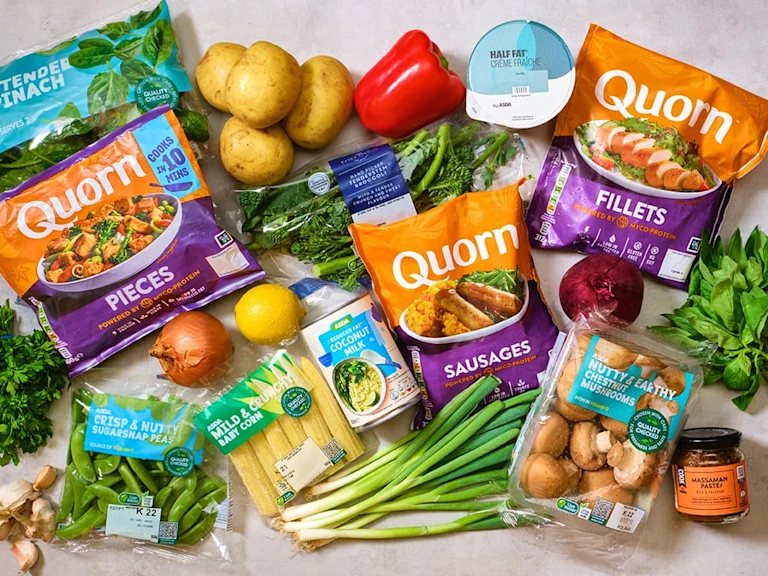
Eating Seasonally

What is it, how do you do it and why should you do it? Step up your sustainable lifestyle with our guide to seasonal eating! Learn more about what's in season when, and why eating this way can benefit the environment and your body.
You may have heard of seasonal eating as the latest new food craze but the trendy practice, adopted by nutritionist and bloggers alike, isn’t exactly a new concept.
Go back a hundred years and seasonal eating would just have been known as, well, eating.
Before trade, modern farming methods and a globalised food system we would simply eat what was in season and on hand at the time. Strawberries would only be available in summer and we would have to wait until April to get our hands on asparagus.
What is Seasonal Eating?
In short, seasonal eating involves eating foods at the same time as it’s ready to be harvested. The purpose being to minimise the time taken to get fresh food from farm to plate, which is usually produced locally.
With fruits and veggies available all year round at supermarkets in the UK, it’s easy to forget that these are grown seasonally and harder to know what’s actually in season and when.
What are the benefits of seasonal eating?
Consuming fresh food that is ready to eat during its preferred (or harvested) season can lead to a number of advantages. Benefiting both ourselves and our local and wider environments:
1. Affordable
Have you ever noticed how much cheaper tomatoes are in summer and early autumn compared to winter? With lower transportation and farming costs, local and readily available fruit and veg can often bare a cheaper price than it’s out-of-season counterparts.
2. Tastes better
Fresher food simply tastes better. Shorter transportation means food harvested and eaten at the peak of ripeness taste better and bares fewer nutrient losses. Fresher food also increases the time you have to consume food before it goes off. Our Roasted Vegetable Buddha Bowl with Quorn Mince is suited for winter when sweet potatoes and cranberries are at their ripest - and most delicious!
3. Supports local community
Though the two don’t always go hand-in-hand, to eat seasonally you usually have to shop local. Green grocers, markets and home-growing are great ways of sourcing perfectly ripe seasonal foods all while helping to support your local community.
4. Helps the planet
Seasonal eating involves fewer traffic miles, reduced, and often no, air miles, and less packaging than buying standard supermarket produce. Out of season produce often relies on artificial heat and light to grow which increases their energy use. Eating seasonally, hence, lowers your carbon footprint and plastic-use which can help our environment.
5. Try new foods
Seasonal eating practices are a great way to introduce new and exciting produce into your diet, some which you may not have tried before. All while varying your diet and meals from month-to-month. For a super satisfying seasonal dish, try our Vegan Laksa with fresh broccoli, bok choi, spinach - perfect for spring!
How can I eat seasonally?
Not everyone can get the hang of seasonal eating and adapt it to their everyday diet. Like most things it can take a little practice. Here are some great tips and tricks to introduce seasonal eating to your plate:
1. Markets
Make the most of green grocers, market stalls and home-delivered veg boxes. Local farmers and businesses will most likely produce only what’s in season which will be at its freshest! Markets also supply a wide range of varied fruit and veg which is great to use in different and exciting dishes. Try our Vegan Satay Noodles with mushrooms, courgettes, carrots and more, here.
2. Shop local
There’s no better place for raspberries than Scotland and don’t think twice about getting your rhubarb from anywhere but Yorkshire! Find out what’s local to your region and where it’s grown best to make the most of seasonal eating. You could even get to know your local greengrocer and learn where they get their produce from and when.
3. Home-grown
There’s no better way to reduce your carbon footprint than growing at home – and cheaper too! Fresh herbs, fruit and vegetables can be grown easily indoors if you lack the outdoor space, and allotments are a great way to grow your own all while embracing the great outdoors. Kale, for example, is hardy, easy to grow and has a long harvest period (June to April) in the UK. Grow at home and try in our tasty Quorn Vegan Caesar Salad, here. And don't worry if you grow too much - simply freeze any surplus product so you can enjoy home-grown fruit and veg out of season too!
4. Try something new
Every heard of a salisfy? Well now you have! This delicious root vegetable can be harvested in spring and autumn. Eating seasonally is a great excuse to vary up your diet and try new and exciting dishes. Wild nettle soup anyone?
5. Download apps and check food blogs
The best trick to seasonal eating is knowledge. Knowing what’s in season and when is a great way to adapt to the eating practice. Keep a seasonal food calendar, check food blogs and download apps dedicated to seasonal eating to keep on track with what’s fresh this month. For example, check out the EUFIC's pioneering tool which allows you to explore when fruits and veggies are in season in Europe for a more sustainable diet, here.
Seasonal calendar
Plan ahead and see what's in season year-round for the UK

Seasonal eating isn't the only way you can help the planet. Switch to Quorn and lower your carbon footprint with our tasty products, find out more here.
Recent news
All news

What's new
Quick 15 Minute Family Meal Planning

What's new
Meals in Minutes


What's new
Protectors of the Planet

What's new